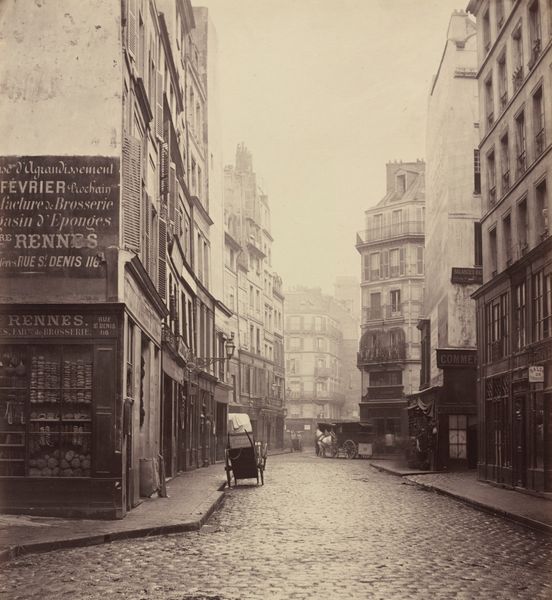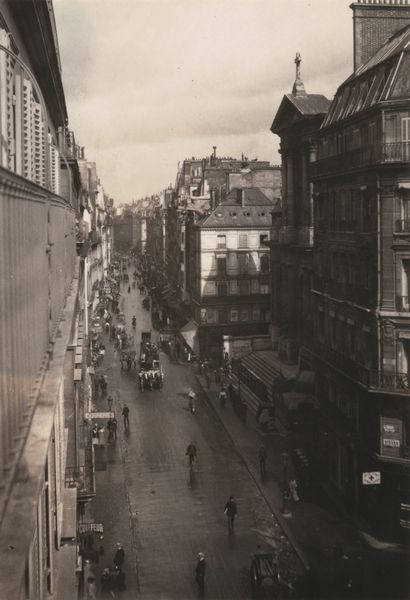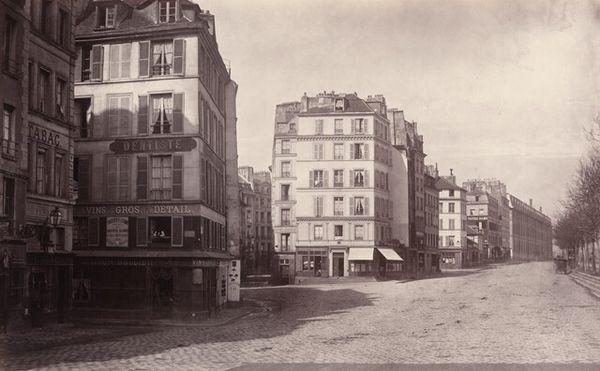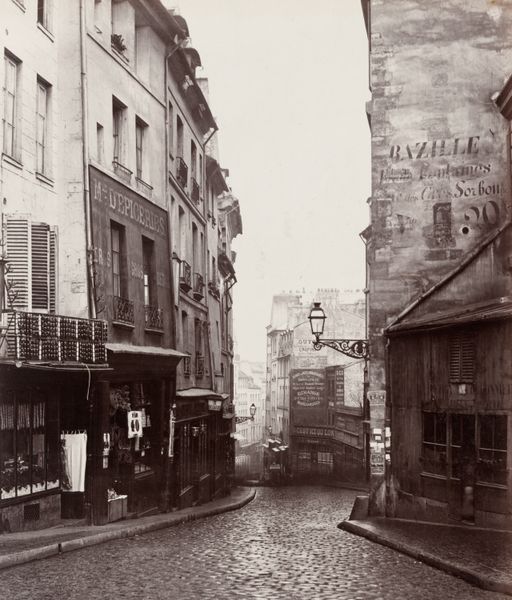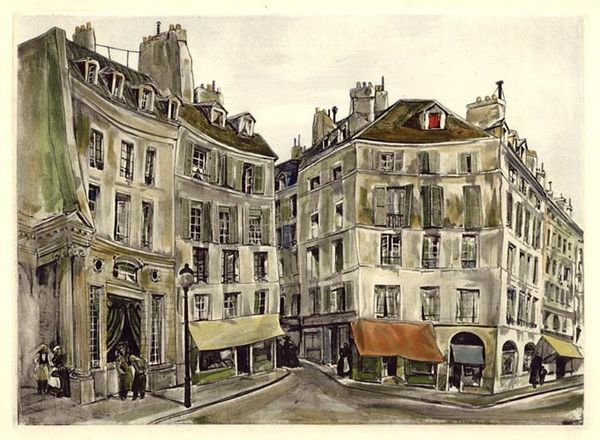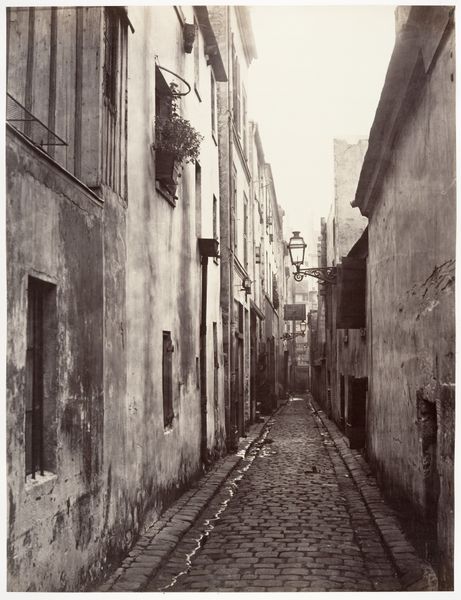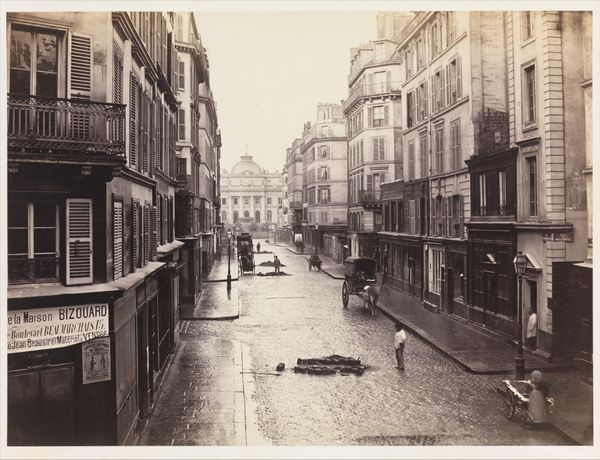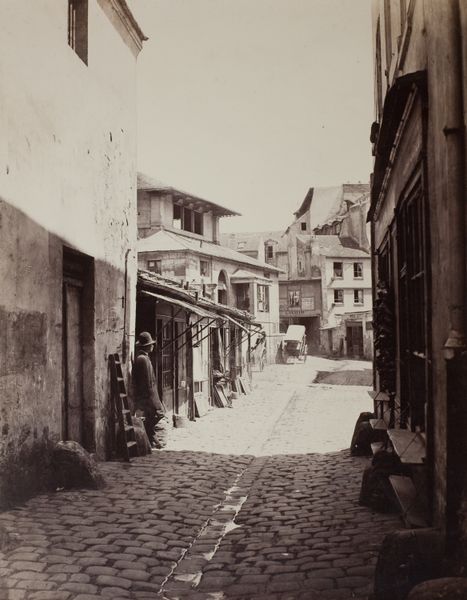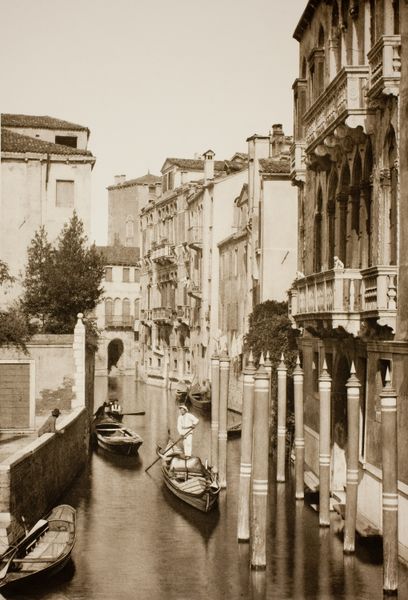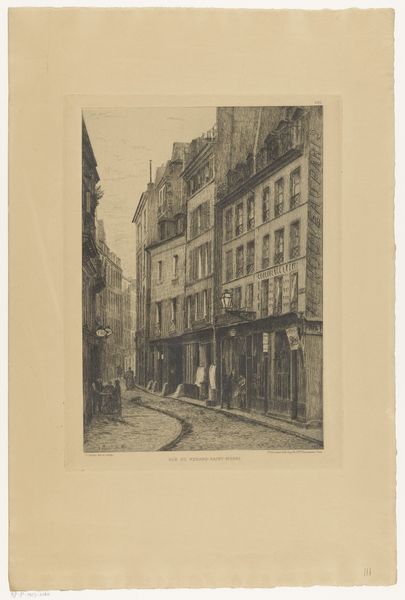
photography, albumen-print
#
urban landscape
#
neoclassicism
#
impressionism
#
street view
#
landscape
#
historic architecture
#
street-photography
#
traditional architecture
#
photography
#
city scape
#
cityscape
#
building photography
#
albumen-print
Dimensions: image/sheet: 34.3 × 27.2 cm (13 1/2 × 10 11/16 in.) overall: 71.12 × 55.88 cm (28 × 22 in.)
Copyright: National Gallery of Art: CC0 1.0
Curator: This albumen print from around 1867 by Charles Marville offers a glimpse into the Passage des Deux-Soeurs de la rue Lafayette, in Paris. It is striking, wouldn’t you agree? Editor: It absolutely is, with this stark contrast in values giving the street an oddly unsettling atmosphere. The cobblestone path and buildings crowd the frame in such a way, adding a claustrophobic effect overall, a closed-in feeling. Curator: That sensation reflects, perhaps unintentionally, the era's urban restructuring. Marville was employed to document the areas of Paris slated for demolition during Haussmann's renovation, preserving them, in a way. These photographs became documents of working-class neighborhoods before their disappearance, and a reflection of the changing social fabric of Paris. Editor: True, and the composition reinforces that, doesn't it? Note the depth of field is carefully constructed. Everything is sharp, crisp; the eye never quite rests, pulled further and further down that narrowing street into a depth that may not actually be there. I’d argue that the greyscale contributes a lot to the feel—as does the slightly elevated vantage point, which enhances the feeling of constraint, boxes you into a singular perspective, so to speak. Curator: Interesting. It seems to me, the "Vins No. 10" sign hanging above one of the structures serves a double purpose here; on one hand, as an informative element pointing to the locale and an example of Parisian street life; while also drawing focus to issues surrounding class differences, social inequalities, and economic changes. These areas were vibrant and complex before their erasure. Editor: The semiotic relationship you bring to bear is spot-on: Marville’s architectural documentation transforms, subtly, the humble ‘Vins’ sign into a symbol of societal change and the tensions within. But formally, the grid pattern created by windows across several stories of architecture brings my eye back into the photographic surface. It flattens it to create something closer to a formal exercise in receding patterns. Curator: Well, this has certainly provided an interesting framework to view Marville's work. By emphasizing its dual character as both social commentary and historical record, perhaps we invite further investigation and reevaluation, Editor: Agreed! We can delve deeper by examining how the manipulation of grayscale shades and strategic organization can heighten emotional tension and complicate conventional landscape interpretations in our future visit, hopefully.
Comments
No comments
Be the first to comment and join the conversation on the ultimate creative platform.

